Protective Gear
Helmets
Helmets are a mandatory item. Ice is harder than your head and even in deep powder you have no idea what is hidden underneath the surface.
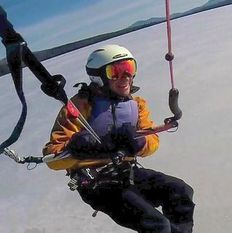 Half Shell Helmet
Half Shell Helmet
Half shell.
A half shell (no jaw piece) helmet is the most common helmet type There are numerous helmet manufacturers and types of helmets available some are snow sport specific while others are general all-rounders. We recommend a snow sports specific half shell as they offer the best protection with added warmth as opposed to a warm season helmet with a warm hat worn underneath. Helmets with a rating ASTM F2040 or CE EN1077 are rated for snow use although any helmet is better than no helmet at all. Most prefer a helmet with some level of venting, especially vents that can be closed. Ear flaps are also a common component for most snow sport helmets and allow you to wear the helmet without a hat underneath. Hats can interfere with the function of the helmet in a crash.
A half shell (no jaw piece) helmet is the most common helmet type There are numerous helmet manufacturers and types of helmets available some are snow sport specific while others are general all-rounders. We recommend a snow sports specific half shell as they offer the best protection with added warmth as opposed to a warm season helmet with a warm hat worn underneath. Helmets with a rating ASTM F2040 or CE EN1077 are rated for snow use although any helmet is better than no helmet at all. Most prefer a helmet with some level of venting, especially vents that can be closed. Ear flaps are also a common component for most snow sport helmets and allow you to wear the helmet without a hat underneath. Hats can interfere with the function of the helmet in a crash.
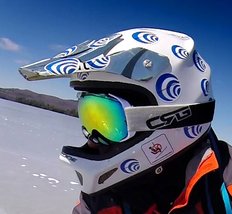 Full Face Helmet
Full Face Helmet
Full Face.
You may have noticed some snow kiters, especially here in northern New England, wear full face (moto style) helmets. There are some advantages and disadvantages depending on your needs. Full face helmets offer an additional level of impact protection over half shells which is obvious. But they also provide additional warmth and protection from wind chill on days when the temps are especially low. There are several snow sport specific full face helmets on the market but many riders choose to use DOT rated motorcycle helmets or DH mountain bike helmets. One of the key disadvantages to full face helmets is the reduced field of view, especially when jumping. We've found the best full faces in that respect to be the 661 Comp and Giro Remedy.
You may have noticed some snow kiters, especially here in northern New England, wear full face (moto style) helmets. There are some advantages and disadvantages depending on your needs. Full face helmets offer an additional level of impact protection over half shells which is obvious. But they also provide additional warmth and protection from wind chill on days when the temps are especially low. There are several snow sport specific full face helmets on the market but many riders choose to use DOT rated motorcycle helmets or DH mountain bike helmets. One of the key disadvantages to full face helmets is the reduced field of view, especially when jumping. We've found the best full faces in that respect to be the 661 Comp and Giro Remedy.
When kite skiing, especially on firm snow or hard ice, some level of protective gear is a good idea.
Most of the locals wear some type of knee protection and elbow protection. Some wear impact vests as well as shorts with padded hip and tail bone protection especially if riding a snowboard with a waist harness. Heavy seat harnesses like a Dakine Fusion for example offer a fair amount of similar protection as well as more support. Generally we follow "Better to have it an not need it than need it and not have it."
Most of the locals wear some type of knee protection and elbow protection. Some wear impact vests as well as shorts with padded hip and tail bone protection especially if riding a snowboard with a waist harness. Heavy seat harnesses like a Dakine Fusion for example offer a fair amount of similar protection as well as more support. Generally we follow "Better to have it an not need it than need it and not have it."
Clothing
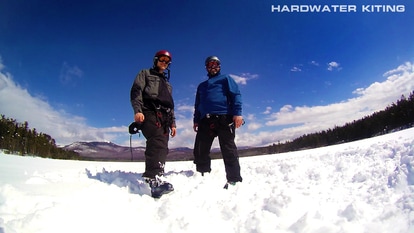
Dressing for snowkiting is essentially the same as dressing for other winter activities where you are physically active. Layering with wicking layers is important. Layers of synthetics, NOT COTTON, are required to wick moisture away and keep you warm and dry. A base layer, possibly some thin loft layer and then a shell are ideal for most people in most kite skiing situations. Counter to what many expect it is rare to be cold while snowkiting. You are constantly moving unlike lift access skiing where you have time to get cold in line or on the chair. Layering more or less depending on the temperatures you're riding in is important as well as having outer shells that have the ability to vent. Be mindful if you wear a waist harness that on many jackets the harness can interfere with venting features like pit zips.
Hardware
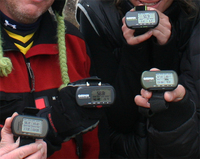
GPS or Maps
Less of a requirement if you aren't interested in travelling far from the launch area or exploring the area. But if you're a bit more of the adventurous inclination and want to explore the region and see all the amazing places that our local lakes have to offer then a GPS and/or a good map is critical. At ice level everything looks the same. It's very easy to get lost on some of the larger lakes. Getting lost or stranded can be at best a pretty big inconvenience and at worst potentially deadly. It's easy to cover a lot of distance on a kite and the weather here changes quickly and sometimes drastically. Being able to find your way in poor visibility is important. A GPS can be critical in getting you back safely.
Less of a requirement if you aren't interested in travelling far from the launch area or exploring the area. But if you're a bit more of the adventurous inclination and want to explore the region and see all the amazing places that our local lakes have to offer then a GPS and/or a good map is critical. At ice level everything looks the same. It's very easy to get lost on some of the larger lakes. Getting lost or stranded can be at best a pretty big inconvenience and at worst potentially deadly. It's easy to cover a lot of distance on a kite and the weather here changes quickly and sometimes drastically. Being able to find your way in poor visibility is important. A GPS can be critical in getting you back safely.
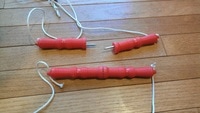
Self Rescue Ice Picks
These are simple but very important tools for getting yourself out of trouble in the event you go through the ice and are unable to use the kite to extract you. They come in different styles and types and some people even make their own. It's not a bad idea to have a pair of these on you at all times but it's especially important at the beginning and end of the season when ice is least reliable or if you are kiting in an area you don't know well or have a solid picture of how good the ice is. 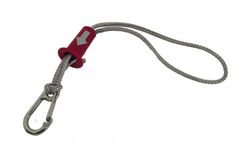 Ozone Shorty Leash Ozone Shorty Leash
Leashes
Leashes are also a mandatory item. Even if you fly an older safety system that is considered "Leash-less" you should have some type of leash system available as a back up. In the event that you have to eject the kite, for the sake of your own safety and those around you, you should have a leash system to keep the kite from blowing across the ice. 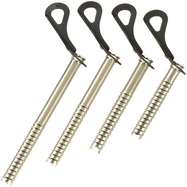 Black Diamond Ice Screws Black Diamond Ice Screws
Ice Screws
Ice screws are used by ice climbers as a means to secure themselves in the event of a fall. For kiting on ice, at least one ice screw is mandatory equipment. Not having an ice screw can mean the difference between having a good day or bad. Having an ice screw can take a situation that has the potential to be very dangerous and turn it into a simple annoyance. Most local snow kiters have at least 2 ice screws. One to launch from and one to have on hand while you're riding in the event of an emergency or even to simple land and secure the kite to take a break. Often the case in touring situations. Even with some of the new safety systems that kites have which all but remove the need for any sort of anchor, we still recommend that you have at least one screw on hand. You may not need it, but it can save someone else. NOTICE: DO NOT ANCHOR A FOIL KITE TO A SCREW WITH THE CHICKEN LOOP!!! Some LEIs can be secured this way due to the nature of they way they depower. Foil kites will power up and cause serious damage to the kite, screw or bystanders. Some will claim that this is safe practice for foils in steady winds. It is not. And it is especially dangerous in shifting winds. Secure to the brake lines or flag out. |
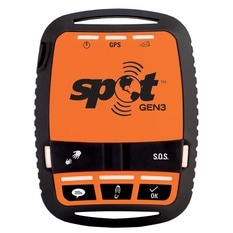
Emergency Locator Beacon
As snow kiters many of us often end up having solo sessions. You ride the narrow windows of opportunity that you can, often in places where cell service isn't available in an emergency. Personal locator beacons are added protection in case things go bad but also a great way to let friend and loved ones know that all is well, automatically, while you rip up first tracks all day. 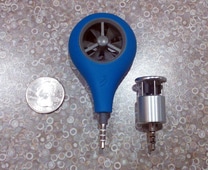
Wind Meter
With experience most kiters get a feel for what the wind is blowing. However even then it's handy to have a meter to measure what's happening. Especially when trying to ascertain the level of gust factor. There is a wide variety of wind meters to choose from. From stand alone units to the examples to the left which are used to make your smart phone into a mobile weather site. These Meters can be found in the parts and accessories section of this website. 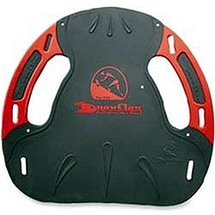
Snow Anchor
For securing a kite in soft snow conditions a "dead man" or snow fluke is a handy option and can be utilized much in the same way one would utilize an ice screw in kite use. However they rely on certain types of snow conditions to really secure the kite and sometimes multiple units may be prudent. There are various methods for improvising snow anchors, many can be found in winter mountaineering literature or by simply doing a Google search. Generally you can simple secure the kite by flag out and using your skis as a dead man. But Flukes are nice, affordable and functional when used correctly and the Snow Claw that we sell (pictured here) makes for an awesome snow shovel that take up nearly zero space. 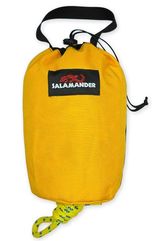
Throw Rope
In the event that someone goes through the ice and is unable to self extract a throw rope by itself can be used to pull someone to safety. On hard ice where it can be difficult to pull someone out directly or if you as the rescuer are not physically strong enough, the rope can be paired with ice screws and carabiners to make a 2:1 (or better) pulley system to extract the rider from the water and to safer ice. |
